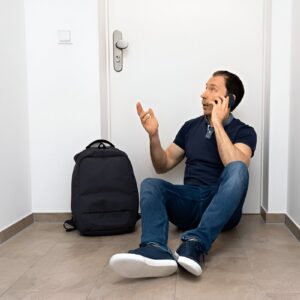Creating an immersive home theater is not just about buying high-quality equipment. One of the most overlooked aspects of achieving great sound is proper home theater speaker placement. Even the best speakers can sound mediocre if placed incorrectly. Unfortunately, many users make simple but impactful mistakes when setting up their systems. The good news is that most of these mistakes are easy to identify and fix.
In this blog, we’ll walk you through the most common speaker placement mistakes and explain how to correct them for a better audio experience.
1. Placing All Speakers at the Same Height
The mistake:
Many people install all their speakers at the same height, thinking this uniformity will create a balanced sound. However, different types of speakers are designed to be placed at different heights.
Why it matters:
Sound travels directionally. Your front left, right, and center speakers should be at ear level, while surround and rear speakers should be slightly above ear level for optimal dispersion.
The fix:
-
Place front speakers at ear level while seated (typically 36 to 42 inches from the floor).
-
Position surround and rear speakers 1.5 to 2 feet above ear level to create a more immersive sound field.
-
If ceiling height is limited, angle surround speakers down toward the listening position.
2. Ignoring the Center Channel Speaker
The mistake:
The center speaker often gets placed too high, too low, or even behind objects like furniture or the TV stand.
Why it matters:
The center channel handles most dialogue and should appear to come directly from the screen. Misplacing it can make voices sound distant or muffled.
The fix:
-
Mount the center speaker directly above or below the screen.
-
Angle it toward ear level if placement is not ideal.
-
Avoid placing it inside a cabinet unless it’s acoustically transparent.
3. Placing Surround Speakers Too Far Behind
The mistake:
Users often install surround speakers directly behind the seating area instead of to the sides.
Why it matters:
Surround channels are designed to provide side audio effects like ambient noise or motion across the room. Putting them too far back reduces the realism.
The fix:
-
Place side surrounds to the left and right of the main listening position at an angle of 90 to 110 degrees.
-
Rear speakers in a 7.1 system should go behind the listener, around 135 to 150 degrees.
4. Unequal Distances from the Listening Area
The mistake:
Speakers are placed at varying distances from the main listening position, which causes delay and unbalanced audio.
Why it matters:
When sound reaches your ears at different times, it disrupts the spatial effects and timing designed in the content.
The fix:
-
Use a tape measure to place front left and right speakers equidistant from the center seat.
-
Your AV receiver should allow you to adjust speaker delay (distance) to fine-tune timing.
-
Use auto-calibration tools or a sound pressure level (SPL) meter for precise setup.
5. Putting Speakers Too Close to Walls or Corners
The mistake:
To save space, people push speakers against walls or into corners, especially subwoofers and front channels.
Why it matters:
Wall reflections and corner placements can exaggerate bass, distort sound, and muddy the audio image.
The fix:
-
Pull front speakers 6 to 12 inches away from the wall to reduce reflections.
-
Avoid placing speakers symmetrically in corners.
-
Test subwoofer placement using the “sub crawl” method: place the subwoofer in your seating area, then walk around to find the spot with the best bass response and place the sub there.
6. Not Angling Speakers Toward the Listening Position
The mistake:
Speakers are set flat against the wall, facing straight ahead rather than toward the audience.
Why it matters:
Speakers have a sweet spot, and angling them toward the listener improves soundstage and clarity.
The fix:
-
Toe-in front left and right speakers slightly toward the main seating position.
-
Angle the center and surround speakers if they are above or below ear level.
-
Make sure the tweeters are aimed toward your ears for the clearest sound.
7. Overloading the Room with Too Many Speakers
The mistake:
Adding more speakers than necessary, especially in small or oddly shaped rooms.
Why it matters:
Too many speakers can cause overlap, reflections, and unbalanced sound, making the system harder to calibrate.
The fix:
-
Match your speaker count to the room size.
-
A 5.1 setup is often sufficient for medium rooms.
-
Only move to 7.1 or Dolby Atmos if your room allows proper spacing.
8. Forgetting Room Acoustics
The mistake:
Assuming speaker placement is the only thing that matters without considering the room’s sound characteristics.
Why it matters:
Hard surfaces reflect sound, while soft materials absorb it. Uncontrolled acoustics can ruin even perfect speaker placement.
The fix:
-
Use rugs, curtains, and upholstered furniture to soften reflections.
-
Add acoustic panels to walls and ceilings at key reflection points.
-
Consider bass traps in corners if your room produces boomy low-end frequencies.
9. Not Using Calibration Tools
The mistake:
Skipping speaker calibration after setup.
Why it matters:
Even if your home theater speaker placement is ideal, calibration ensures each speaker is properly balanced in volume and timing.
The fix:
-
Use the auto-calibration mic that came with your AV receiver.
-
Use an SPL meter for manual calibration.
-
Recalibrate if you move speakers or furniture.
Conclusion
Perfect sound is not just about the equipment—it’s about positioning, environment, and calibration. The best home theater speaker placement considers ear level, room acoustics, speaker angles, and balance between channels. Avoiding the common mistakes listed above and applying the right fixes will greatly enhance your home theater experience.
Take the time to set up your speakers thoughtfully, and you’ll be rewarded with clearer dialogue, deeper immersion, and more realistic soundscapes. Your movies, games, and music will thank you for it.
Read more: https://soundsightav.odoo.com/blog/our-blog-1/how-to-perfectly-place-your-home-theater-speakers-17



